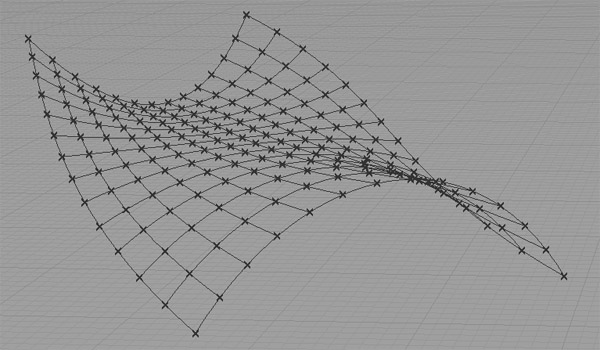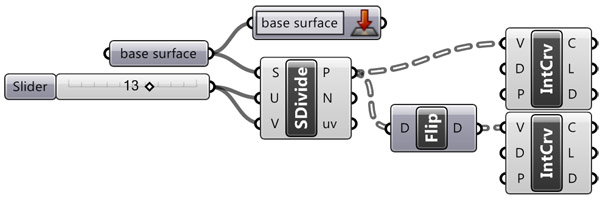Surface Subdivision
by Tuğrul Yazar | December 25, 2011 23:42

[2011_12_25_divide][1] here is the fundamental of surface subdivision in Grasshopper. In order to design a parametric truss exercise, this is the generally accepted starting point. Get a surface from the file, subdivide it into U and V directions to create point lists, and then manipulate these points to create something interesting. Having a list of points would also present good potential regarding attraction with other entities, such as point or curve attractors. As you probably notice, this is the new version of Grasshopper, which also includes NURBS objects.

As a parametric truss exercise, this method has some other variations, using subsurfaces or Delaunay connectivity diagrams. It’s up to the designer to make this choice, however, no one still manages to represent all possible choices. From an educational perspective, such explorations might give students a fundamental understanding of parametric modeling and associative geometry but also has pitfalls such as software dependency (especially in pretty VPLs such as Grasshopper) and behaviorist learning.
- [2011_12_25_divide]: https://www.designcoding.net/decoder/wp-content/uploads/2011/12/2011_12_25_divide.ghx
Source URL: https://www.designcoding.net/parametric-truss-02-2/